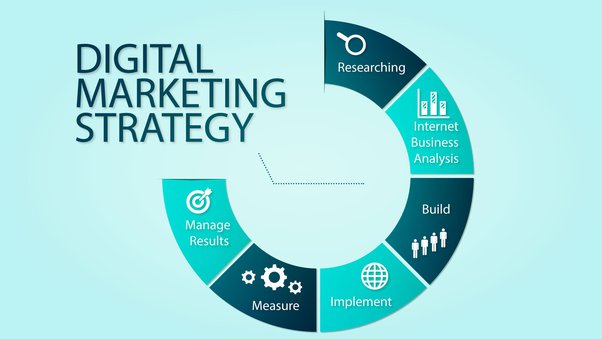
Creating a successful digital marketing plan can be a complex and challenging task. With so many different channels and tactics to choose from, it can be difficult to know where to start and how to measure success. However, with a clear strategy and a thorough understanding of your target audience, you can create a digital marketing plan that works for your business.
The first step in creating a digital marketing plan is to define your target audience. This includes identifying their demographics, interests, and pain points. Understanding your target audience will help you determine the most effective channels and tactics to reach them. For example, if your target audience is primarily made up of young adults, social media channels such as Instagram and TikTok may be more effective than traditional channels such as television or print ads.
Next, you should set your goals and objectives. These should be specific, measurable, and attainable. For example, your goal may be to increase website traffic by 20% or to generate 10% more leads. Setting clear goals and objectives will help you measure the success of your digital marketing efforts and make adjustments as needed.
Once you have a clear understanding of your target audience and goals, you can start to develop your strategy. This includes deciding which channels and tactics to use, as well as the content and messaging that will be used. For example, if your goal is to increase website traffic, you may decide to focus on SEO and PPC advertising. If your goal is to generate more leads, you may decide to focus on email marketing and lead magnets.
One of the most important aspects of a successful digital marketing plan is creating a consistent and cohesive brand message. This includes developing a consistent visual identity and tone of voice across all channels and tactics. This will help to ensure that your target audience recognizes and trusts your brand, making them more likely to engage with your content and ultimately convert into customers.
Measuring the success of your digital marketing plan is crucial in order to make adjustments and improve your results. This includes tracking metrics such as website traffic, conversion rates, and ROI. Regularly analyzing your data will help you understand which tactics are working and which are not, and make adjustments accordingly.
In addition, A/B testing is an essential part of any digital marketing plan. A/B testing, also known as split testing, is a method of comparing two different versions of a website or campaign in order to determine which one is more effective. This can be done for a variety of elements, such as headlines, images, or call-to-action buttons. A/B testing helps to ensure that your digital marketing efforts are as effective as possible.
Another key component of a successful digital marketing plan is staying up-to-date with the latest trends and best practices. This includes keeping an eye on emerging technologies, such as virtual and augmented reality, as well as staying informed about changes to algorithms and policies on social media platforms. Staying on top of the latest trends and best practices will help you stay ahead of the competition and ensure that your digital marketing efforts are as effective as possible.
In conclusion, creating a successful digital marketing plan requires a clear strategy, a thorough understanding of your target audience, and a commitment to measuring and analyzing your results. By setting specific goals and objectives, developing a consistent brand message, and staying up-to-date with the latest trends and best practices, you can create a digital marketing plan that works for your business. Remember that digital marketing is an ongoing process and it’s important to continuously evaluate and adjust your strategies to achieve the best results.



